Several EU regulations and directives set requirements concerning packaging sustainability and recycling symbols. While some symbols are voluntary, others are mandatory.
In this guide, we explain what EU companies must know about Packaging and Packaging Waste Regulation symbols, Green Dot, FSC, and other symbols and markings indicating packaging sustainability and recycling.
Note: This article has been updated since the video was recorded. The video may contain some errors.
Content Overview

FREE CONSULTATION CALL (30 MIN)
 Ask questions about compliance requirements
Ask questions about compliance requirements Countries/markets:
Countries/markets:
 Learn how we can help your business
Learn how we can help your business
You will speak with:Ivan Malloci or John Vinod Khiatani
Packaging and Packaging Waste Regulation (PPWR)
The Packaging and Packaging Waste Regulation establishes requirements for packaging, including labelling, substance restrictions, and extended producer responsibility requirements. In this guide, we only focus on labelling requirements related to recycling and sustainability provisions.
Harmonised label
Packaging should include a harmonised label that contains information concerning its material composition, aiming at facilitating consumer sorting. The label should be based on pictograms, and it may also indicate information on the packaging’s compostability.
Additionally, substances of concern as listed in Article 5 (e.g. heavy metals) should be identified by means of “standardised, open, digital-marking technologies”.
According to Article 12 of the regulation, the exact information that should be included in the label will be specified in a future implementing act under the PPWR.
Packaging subject to deposit and return systems
Packaging that is subject to deposit and return systems as specified in Article 50 (e.g. single-use plastic beverage bottles) should be marked with a clear label, as established in the relevant implementing act.
Reusable packaging label
Reusable packaging should bear a label that informs the user of the fact that the packaging is reusable.
Additional information, such as collection points, should be made available via a QR code (see section below for more details).
Extended Producer Responsibility (EPR)
Chapter VIII of the PPWR sets extended producer responsibility requirements. In general, companies are required to contract a producer responsibility organisation (PRO) for the proper collection, recycling, and disposal of their packaging waste.
The requirements also include the obligation to make it possible to identify the relevant PRO via a symbol in a QR code or other standardised system that allows for assessing if the producer is fulfilling its extended producer responsibility obligations.
See the next section for more information on the QR code.
QR Code
Both Article 12: Labelling of packaging and Article 15: Obligations of manufacturers mention a QR code. Specifically, Article 12 mentions it in several contexts, such as:
- Sorting
- Reusable packaging label
- EPR
Article 12:
In addition to the harmonised label referred to in this paragraph, economic operators may place a QR code or other type of standardised, open, digital data carrier on the packaging that contains information on the destination of each separate component of the packaging in order to facilitate consumer sorting.
[…]
Further information on reusability, including the availability of a local, national or Union-wide re-use system and information on collection points, shall be made available through a QR code or other type of standardised, open, digital data carrier that facilitates the tracking of the packaging and the calculation of trips and rotations, or, if that calculation is not feasible, an average estimation.
[…]
By 12 February 2027, packaging included in an extended producer responsibility scheme may be identified throughout the territory of the Member States in which that scheme or system applies. Such identification shall be achieved only by means of a corresponding symbol in a QR code or other standardised, open, digital-marking technology in order to indicate that the producer fulfils its extended producer responsibility obligations.
[…]
Article 15(6):
Manufacturers shall indicate on the packaging or on a QR code or another data carrier their name, registered trade name or registered trademark as well as the postal address at which and, where available, the electronic means of communication by which they can be contacted. Where that is not possible, the required information shall be provided as part of the information through the QR code or other type of standardised, open, digital data carrier as referred to in Article 12(1), (2), (4) or (5) or in a document accompanying the packaged product. The postal address shall indicate a single point at which the manufacturer can be contacted.
Although this is not explicitly mentioned, our understanding is that the regulation is always referring to the same QR – and it does not require multiple QR codes. For example, on Article 62, the regulation refers to a single “QR code or data carrier referred to in Article 12”.
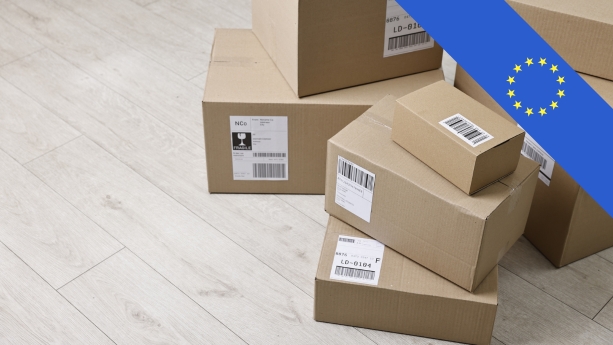
EPR Symbols
The Packaging and Packaging Waste Directive sets EPR requirements. In short, you need to contact a PRO in the country where you intend to sell your packaging, which should help you with registration, waste collection and other requirements. However, different EU countries have implemented these requirements in different ways.
This led to the existence of different EPR symbols, and we provide two examples below – although more symbols exist.
Note that, starting 12 August 2026, the Packaging and Packaging Waste Regulation will replace the current Packaging and Packaging Waste Directive. Thus, for the future, you should refer to the requirements set by the regulation.
Green Dot
Most countries in Europe (e.g. Germany and Spain) use the Green Dot. For example, producers using Germany’s Der Grüne Punkt scheme can affix the Green Dot in their packaging to indicate that they use an EPR scheme to retrieve and recycle packaging sold in Germany.
Nationally-recognised packaging recovery systems, such as Germany’s Der Grüne Punkt, should:
1. Help producers take back the packaging sold on the market
2. Sort and recycle the packaging
3. Implement producer responsibility rules for the producers.
Note that, as far as we know, the use of the symbol is voluntary.
Triman Logo
According to CITEO, a French PRO, if you sell packaged products to households in France, you should label your packaging with a Triman logo to “declare” that you are using CITEO – or another PRO – to process your packaging waste.
Commission Decision 97/129/EC: Identification System For Packaging Materials
Commission Decision 97/129/EC sets codes for identifying packaging material, such as plastics, paper, and others.
According to Article 8 of the Packaging and Packaging Waste Directive, the Directive adopted the use of the identification system set by the Decision in order to facilitate the collection, reuse, recovery, and recycling of packaging.
That said, Article 70 of the Packaging and Packaging Waste Regulation states that the Commission Decision 97/129/EC will be repealed on 12 August 2028. Always according to the Regulation, the codes set by the decision should be replaced by the harmonised label established under the Packaging and Packaging Waste Regulation.
Identification system
Article 3 of this Decision states that Annexes I to VII contain the categories of packaging materials along with their corresponding abbreviations and numbering.
The table below summarises the information in the Annexes and provides examples of packing materials, their abbreviations, and numbering.
| Annex | Material category | Material examples | Abbre viations |
Numbering |
| I | Plastic | Polyethylene terephthalate | PET | 1 |
| I | Plastic | High-density polyethene | HDPE | 2 |
| II | Paper and fibreboard | Corrugated fibreboard | PAP | 20 |
| II | Paper and fibreboard | Paper | PAP | 22 |
| III | Metals | Steel | FE | 40 |
| III | Metals | Aluminium | ALU | 41 |
| IV | Wood | Wood | FOR | 50 |
| IV | Wood | Cork | FOR | 51 |
| V | Textile | Cotton | TEX | 60 |
| V | Textile | Jute | TEX | 61 |
| VI | Glass | Colourless glass | GL | 70 |
| VI | Glass | Green glass | GL | 71 |
| VII | Composites | Plastic / aluminium | / | 90 |
| VII | Composites | Glass / tinplate | / | 97 |
Countries where material identification codes are mandatory
Some countries in the EU mandate the use of the material identification codes. We are only aware of two such countries that have this requirement.
Italy
According to Article 3 of Italy’s Legislative Decree no. 116 of 3 September 2020, producers in Italy must indicate what material their packaging consists of, based on Commission Decision 97/129/EC.
Bulgaria
According to Article 5 of Bulgaria’s Ordinance on Packaging and Packaging Waste, packaging should bear an identification number and/or abbreviation specified in Appendix No 2. Although we could not find a direct mention of Commission Decision 97/129/EC in the Ordinance, we found that it provides the same abbreviations and numbering as per the decision.
Mobius Loop (Universal Recycling Symbol)
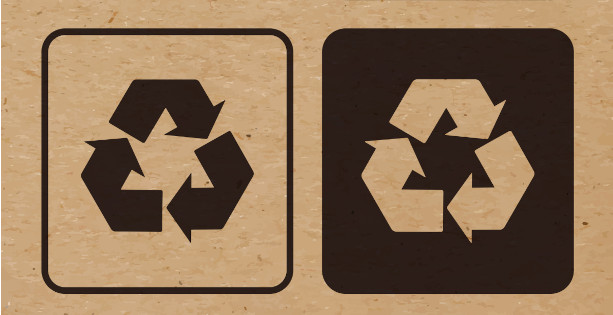
The Universal Recycling Symbol is also known as the Mobius Loop, and, according to our research, it can be used on a voluntary basis. It is based on the “Mobius strip” and depicts three chasing arrows, which reference the cyclical process of reusing and recycling products or materials.
Companies that affix the Mobius Loop to their products are signalling the recyclability of their products or packaging. If they do so, they may need to provide evidence that their products and packaging are indeed recyclable.
According to the “Guidelines for Voluntary Environmental Labeling” published by the CONAI, companies affixing the Mobius Loop on products for sale in Italy can only do so if they are in compliance with the requirements of the EN ISO 14021 standard.
Note that we were unable to find information regarding the accepted usage of the Mobius Loop in other EU member states.
OK Compost Label
Products or packaging bearing the OK Compost label indicate that such products or packaging are compostable. There are two types of labels:
- OK compost INDUSTRIAL
- OK compost HOME
OK Compost INDUSTRIAL
Products or packaging carrying the OK compost INDUSTRIAL label are deemed to:
a. Be compostable in an industrial plant at temperatures between 55 °C and 60°C
b. Comply with the requirements of the Packaging and Packaging Waste Directive and the harmonised EN 13432 standard
OK Compost HOME
Packaging or products bearing the OK compost HOME label are compostable in garden heaps at lower temperatures. As far as we understand, the OK compost HOME certification scheme is not based on any standard; instead, it is based on technical requirements set by TÜV AUSTRIA. These requirements also serve as the foundation for several other standards, such as the following:
- Australia’s AS 5810 for biodegradable plastics
- France’s NF T 51800 for plastics
- Europe’s prEN 17427 for packaging
Is the OK compost label mandatory?
The OK Compost Label is not mandatory. However, it indicates that the products or packaging comply with the relevant standards and requirements on compostable materials.
Thus, companies can benefit from using the OK compost label for branding purposes since more and more consumers choose to use compostable products, given the fact that they are more eco-friendly than similar, non-compostable products.
Product scope
The OK compost label applies to products such as the following:
- Packaging material
- Disposable cutlery
- Disposable cutlery and plates
Requirements
Companies need to follow the steps below to have their products or packaging certified, and thus earn the right to affix the label to their packaging.
Submit a certification application
Companies should apply for certification by filling in the relevant form on the TÜV AUSTRIA website.
The form requires several pieces of information, including:
- Applicant status
- Request for new certification
- Contact information
Lab testing
Companies seeking to acquire an OK compost certificate must ensure their products are tested per the harmonised EN 13432 standard (for OK compost INDUSTRIAL) or relevant technical requirements (for OK compost HOME).
The tests should be performed by TÜV AUSTRIA-registered labs, such as the following:
- AIMPLAS (Spain)
- TUV Rheinland Shanghai (China)
- INNOVHUB SSI (Italy)
FSC Recycled Label
The Forest Stewardship Council (FSC) is an international non-profit organisation that promotes responsible management of the world’s forests. The FSC allows certified companies to use the following FSC labels on their products:
- FSC Recycled
- FSC 100%
- FSC Mix
The FSC Recycled label implies that the product is made from 100% recycled material.
Products bearing an FSC 100% Label indicate that all the materials used in FSC-certified products:
a. Come from FSC-certified forests
b. Reflect FSC’s sustainable forestry practices
Products that bear the FSC Mix label contain materials from FSC-certified forests, recycled materials, and/or FSC-controlled wood.
Is the FSC Recycled label mandatory?
Usage of the FSC Recycled label is not compulsory. However, companies can benefit from using the FSC Recycled label for branding purposes due to the rising number of consumers choosing sustainable products. Also, the FSC Recycled label can attract retailers that only sell sustainable products.
Product scope
The FSC labels apply to products such as:
- Wooden packaging
- Wooden furniture
- Household decoration items
- Wooden food containers
Requirements
This section briefly explains how to have your products or packaging FSC-certified.
Submit a certification application
Companies should choose an FSC-accredited certification body and submit a certification application.
Assessment
We understand that, in order to track the materials and ensure that they are compliant with FSC requirements, you must implement a management system to ensure “chain of custody”.
Companies need to prove FSC chain of custody compliance by:
a. Undergoing an assessment by their chosen FSC-accredited certification body
b. Completing and submitting an FSC Check questionnaire
Once the above steps are completed, you must sign the Trademark License Agreement to obtain certification.
Certification
Once a company is certified, it earns the right to use the FSC label on its products or packaging.
Annual auditing
As part of the certification process, your chosen certification body performs annual audits on your company to determine your continued compliance with your chain of custody certification.

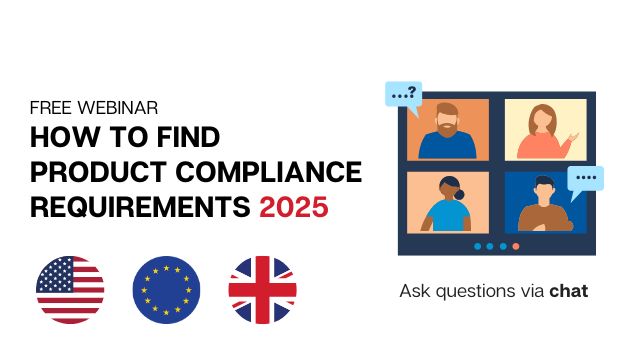
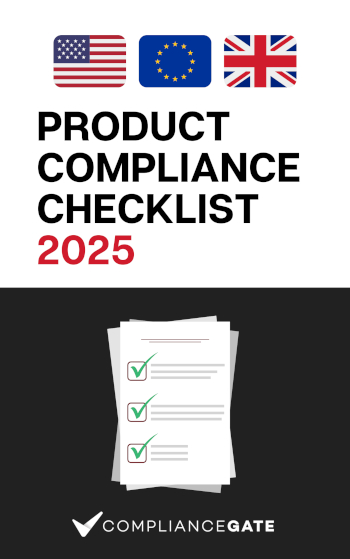




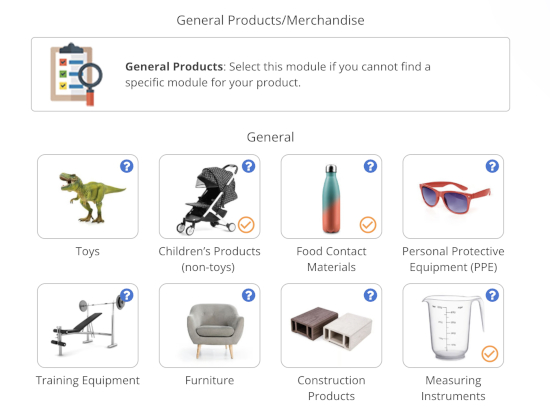






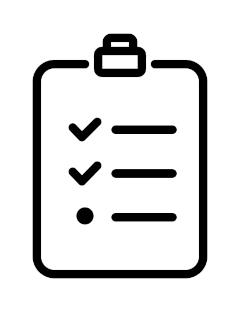


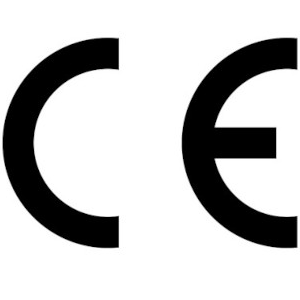




.png)
.png)
.png)
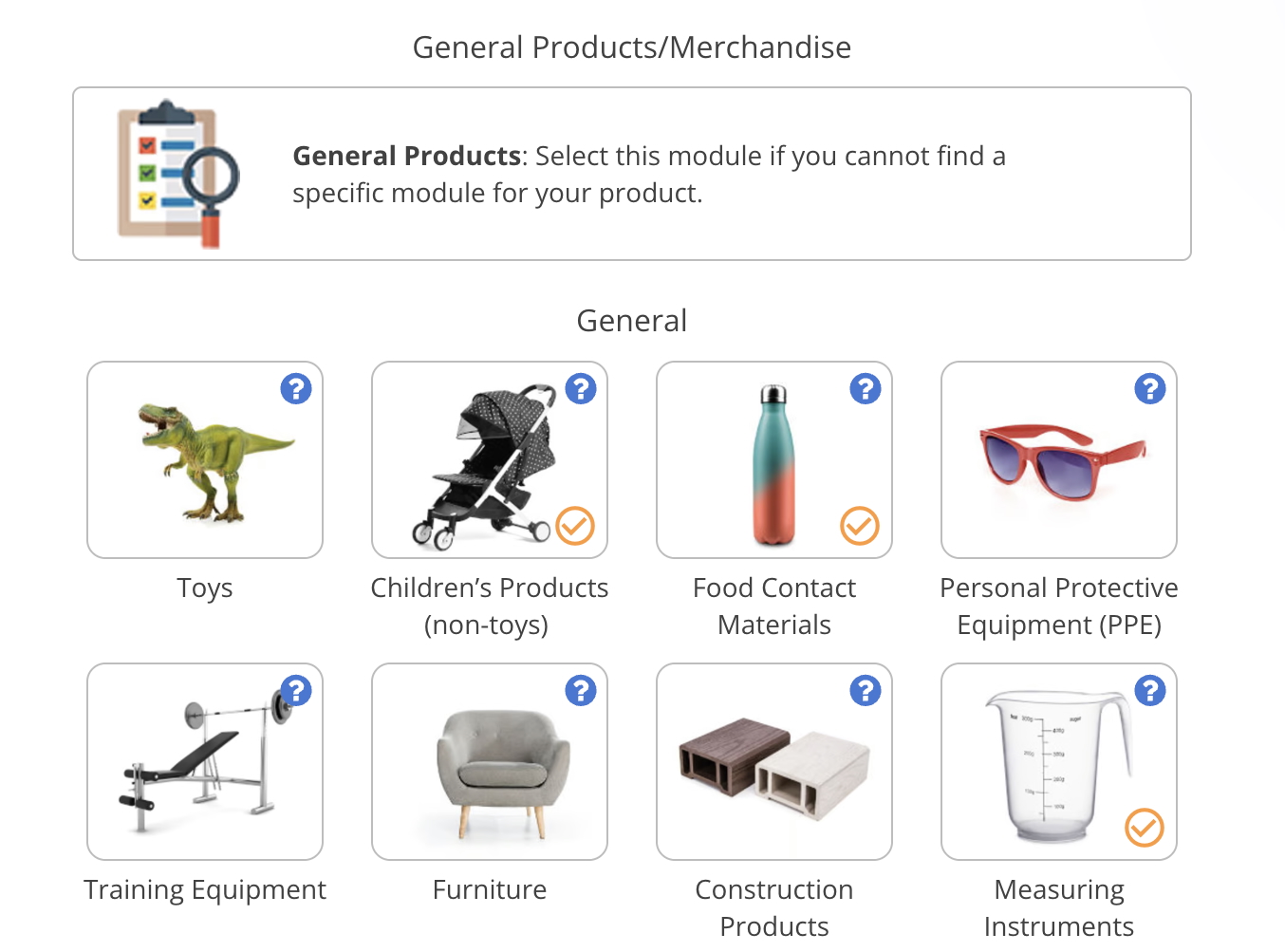


I have seen that the PAP 20 and PAP 21 codes usually are presented together with a black three-arrow loop. Does anyone know from where this symbol originate? Does it come from any standard or country-specific regulation?
Excellent article, just on plastic, is there a different symbol for single use (non-reusable) plastic containers? Intertek HK has mistakenly wanted us to use an open circle with an arrow symbol (pity unable to paste picture in here) for our PP item that we have recycle symbol with 5 etched on the products.
I believe that the French Triman Symbol is also a requirement in France and has been since 2015. The latest Environmental Law (Code de l’environnement Art. L541-9-3) has both expanded the use of this logo and has also limited or eliminated the allowable use of the Green Dot symbol for products sold into France.
If I remember correctly, this has caused some argument within the EU as this places French Law against the laws of other member states, especially regarding the Green Dot symbol. I am interested in finding out how this plays out within the EU.
Great article. One question, is there a penalty for having the wrong coding on a plastic article? For example, having the Recycle Symbol with “1” in the chasing arrows but showing PP under the logo?